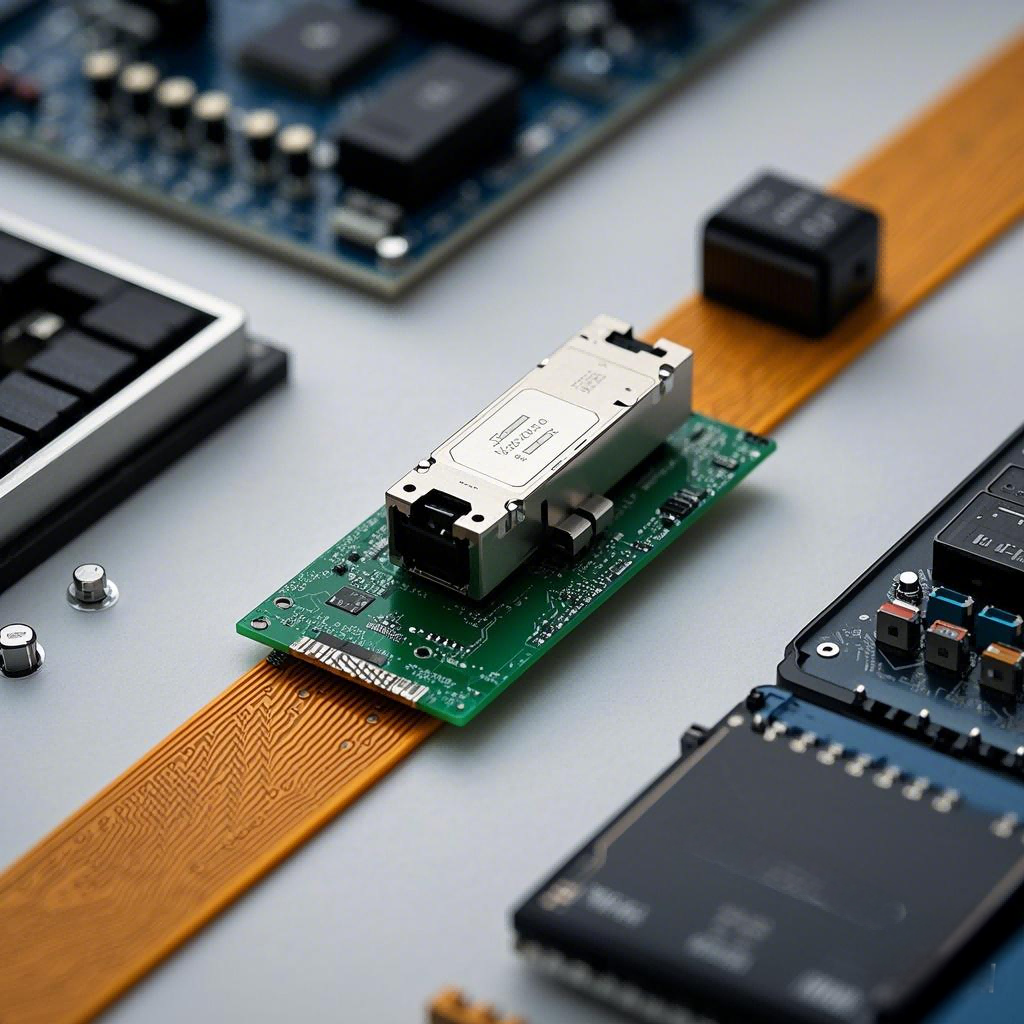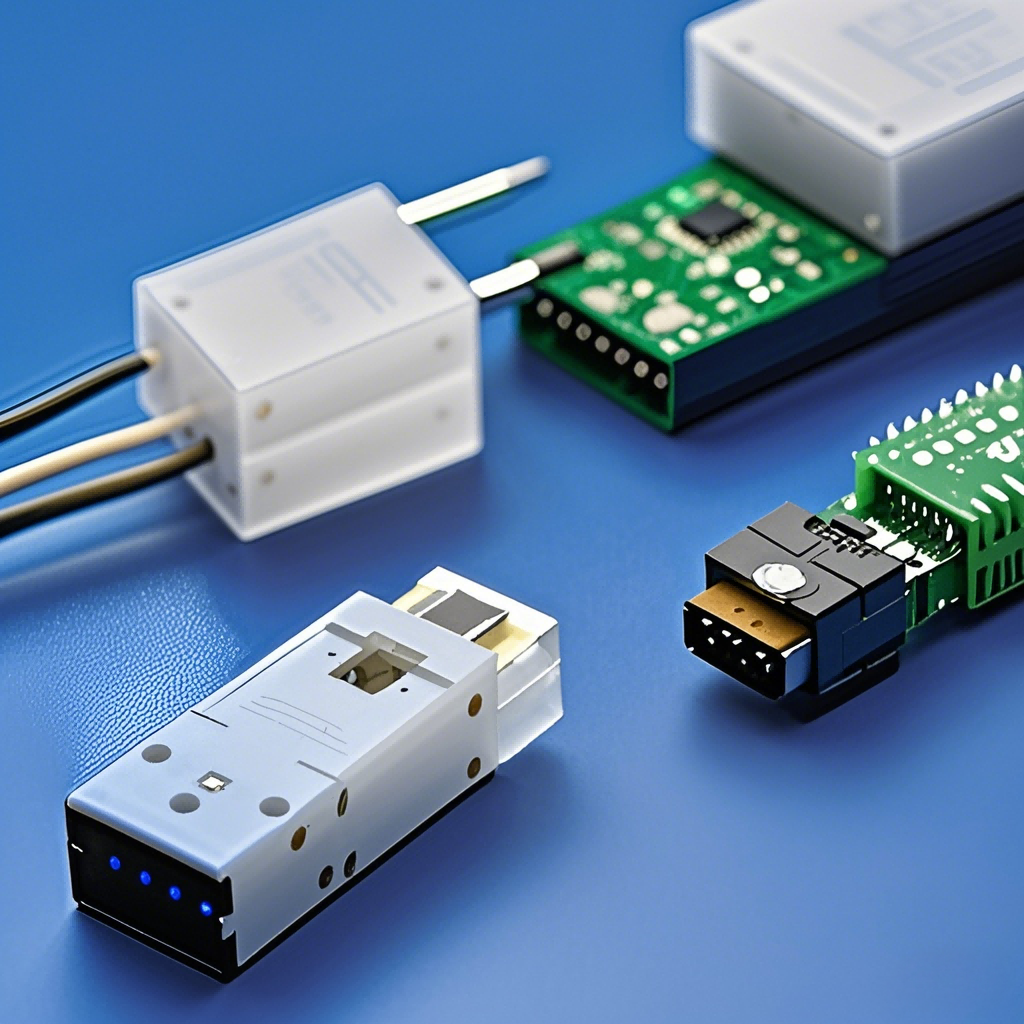Search
Unveiling the Profound Insights into FPC within the Optical Communication Realm
- Dec 25,2024
-
Share
In the highly dynamic and perpetually advancing optical communication landscape, which embraces a diverse array of products such as high-speed optical modules, intricate optical communication device modules, and cutting-edge 5G transparent antennas, Flexible Printed Circuits (FPCs) have indisputably carved out a crucial niche, possessing a plethora of unique characteristics and remarkable advantages that set them apart.

Salient Characteristics and Prevailing Advantages of FPC in Optical Communication
1. Unparalleled Flexibility and Space Optimization
FPCs, with their inherent pliability, can be artfully bent and deftly folded, thereby unlocking the potential for remarkably more compact and ingenious designs in optical communication devices. Within the constricted confines of optical modules and the sophisticated architecture of 5G antennas, their flexibility empowers engineers to exploit space with utmost efficiency. This eliminates the necessity for cumbersome connectors and rigid wiring harnesses, a factor of paramount importance, especially in the context of handheld or portable optical communication equipment, where the minimization of size and weight is not only a desirable trait but often a decisive competitive edge.
2. Ultra-High-Density Interconnection Capability
Endowed with the technical prowess to fabricate exquisitely fine traces and vias, FPCs emerge as the enablers of high-density interconnection. In the realm of optical communication device modules that are tasked with managing multiple optical channels and juggling high-speed electrical signals, FPCs serve as the reliable conduits, establishing seamless connections between components that are in close proximity. This not only guarantees the efficient transmission of signals but also conspicuously reduces the overall footprint of the circuitry, a boon for miniaturization efforts and enhanced system integration.
3. Superior Signal Integrity Maintenance
FPCs can be meticulously engineered with precisely controlled impedance, a critical factor in safeguarding signal integrity, which lies at the very heart of high-speed optical communication applications. By effectively minimizing signal loss, crosstalk, and reflection, they pave the way for the unerring transmission of data within optical modules operating at staggering gigabit and terabit speeds. This unwavering reliability and stellar performance of the optical communication system are, in no small measure, attributable to the signal integrity prowess of FPCs.
4. Exceptional Adaptability to Dynamic Operational Environments
In the context of 5G transparent antennas, which are frequently subjected to movement, vibration, and fluctuations in temperature and humidity, FPCs exhibit a remarkable edge over their rigid circuit board counterparts. Their flexible constitution empowers them to endure mechanical stress without compromising the integrity of electrical performance. This translates into stable and uninterrupted operation, even in the face of the most diverse and challenging environmental conditions, ensuring the seamless functioning of the overall optical communication infrastructure.
Pivotal Considerations in the Design and Production of FPC for Optical Communication
1. Material Selection: The Cornerstone of Success
The selection of dielectric and conductor materials is a decision of utmost consequence. For optical communication applications, materials boasting low dielectric loss and excellent thermal stability are the materials of choice. These attributes are essential in minimizing signal attenuation and underpinning reliable performance across a broad temperature spectrum. Concurrently, the materials must also possess the requisite flexibility and mechanical robustness to withstand the rigors of repeated bending and flexing, a characteristic that is non-negotiable for FPCs in optical communication devices.
2. Precision Manufacturing Processes: The Quest for Perfection
High precision is the watchword in the etching, drilling, and lamination processes that culminate in the production of FPCs. The attainment of accurate trace widths, via sizes, and layer alignment is not a matter of luxury but an absolute necessity. Any deviation in these processes can precipitate impedance mismatches, electrical shorts, or opens, all of which can have a deleterious impact on the performance of the optical communication product. Stringent quality control measures and state-of-the-art manufacturing technologies are thus indispensable in this regard.
3. Thermal Management: A Crucial Imperative
Given that optical communication components are prone to generating heat during operation, the implementation of proper thermal design within FPCs is of cardinal importance. This entails the strategic use of thermal vias, the integration of heat sinks, or the employment of thermally conductive materials to effectuate efficient heat dissipation and preclude overheating. Failure to do so could precipitate a degradation in performance and a foreshortening of the lifespan of the device, consequences that are simply unacceptable in the highly demanding optical communication arena.
4. Signal Routing and Layout: The Art of Precision Engineering
Meticulous attention must be lavished on the routing of electrical signals to obviate crosstalk and interference. In optical modules and device modules, where multiple high-speed signals coexist in a confined space, the deployment of proper shielding and isolation techniques is not an option but an essential prerequisite for maintaining signal integrity. Sophisticated design algorithms and simulation tools are often enlisted to optimize signal routing and layout, ensuring the seamless flow of data without corruption or loss.

Problem-solving Strategies in FPC Production for Optical Communication
1. Mitigating Signal Integrity Issues: A Holistic Approach
Should signal integrity problems rear their ugly heads, such as excessive crosstalk or signal attenuation, a comprehensive redesign of the layout is often warranted. This may entail the adjustment of trace spacing to optimize signal separation, the addition of shielding layers to attenuate unwanted electromagnetic interference, or the alteration of the routing topology to streamline signal flow. Additionally, impedance matching can be fine-tuned with surgical precision by delicately adjusting the trace width and dielectric thickness, leveraging advanced simulation software and engineering expertise to restore and enhance signal integrity.
2. Tackling Thermal Problems: A Multi-Faceted Solution
In the event of overheating, a multifarious approach to enhancing the thermal design is in order. This could involve augmenting the number or enlarging the size of thermal vias to augment heat conduction pathways, improving the contact between the FPC and heat sinks to enhance heat transfer efficiency, or opting for materials with elevated thermal conductivity to expedite heat dissipation. Simultaneously, the power distribution within the device can be judiciously optimized to curtail heat generation in critical areas, thereby maintaining the thermal equilibrium and ensuring the reliable operation of the FPC and the associated optical communication components.
3. Resolving Manufacturing Defects: A Rigorous Regimen
For issues such as electrical shorts or opens, the implementation of a comprehensive inspection process is non-negotiable. Automated optical inspection (AOI) systems, complemented by rigorous electrical testing protocols, are deployed to detect and identify defects with unerring accuracy. When defective FPCs are unearthed, every effort is made to repair them, provided the damage is not irreparable. Concurrently, the manufacturing process is subjected to a microscopic examination and, if necessary, recalibrated by refining etching parameters, enhancing drilling accuracy, or optimizing lamination techniques. This iterative process of inspection, repair, and process improvement is the bedrock of defect prevention and the pursuit of manufacturing excellence in the production of FPCs for optical communication.
At Shenzhen Huaruixin Electronics Co., Ltd., we have honed our expertise and specialization in the production and sales of FPCs, amassing a wealth of experience in catering to the idiosyncratic and exacting requirements of the optical communication industry. We extend a warm invitation to both our esteemed new and existing customers to engage in a vibrant exchange of ideas and collaborative efforts. By sharing insights and learning from one another, we are confident of surmounting the challenges that lie ahead and further augmenting the application and efficacy of FPCs in the ever-evolving optical communication products landscape.

Let’s talk! We’ll provide the perfect solution for you!
-
 Huaruixin Electronics mainly produces printed circuit boards as the core business, to provide customers with one-stop solutions for FPC/PCB production, components sourcing and Assembly.
Huaruixin Electronics mainly produces printed circuit boards as the core business, to provide customers with one-stop solutions for FPC/PCB production, components sourcing and Assembly. - WHAT WE DO — PCB Design Solutions — Flex PCB Production — Components Sourcing — FPC&PCB Assembly
- PRODUCTS — Single Sided Flexible Circuits — Double Sided Flexible Circuits — Multilayer Flexible Cirucits — Rigid-Flex Circuits — FPC Assembly — PCB Assembly
- CAPABILITY — FPC Capability — Rigid-Flex Capability — PCB Capability — Assembly Capability
- Copyright © 2024 Shenzhen Huaruixin Electronics Co., Ltd. All Rights Reserved.
- Design By BONTOP


